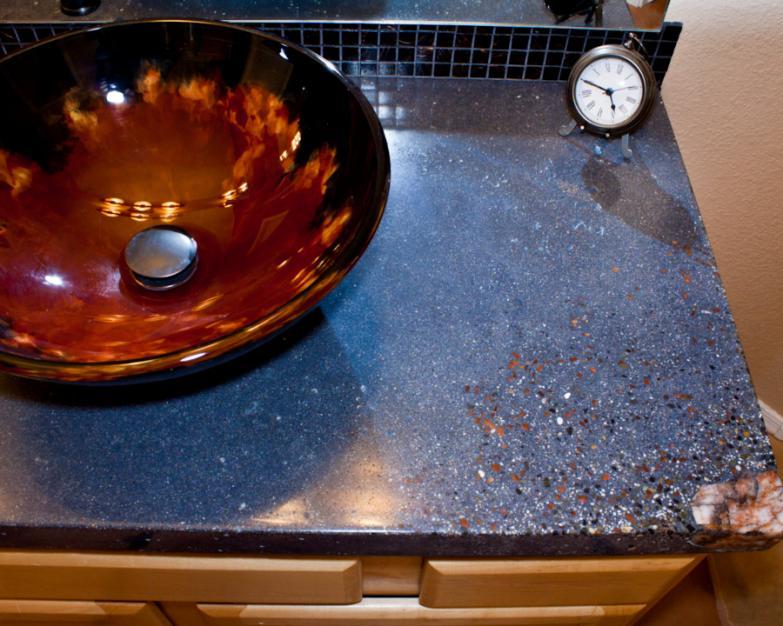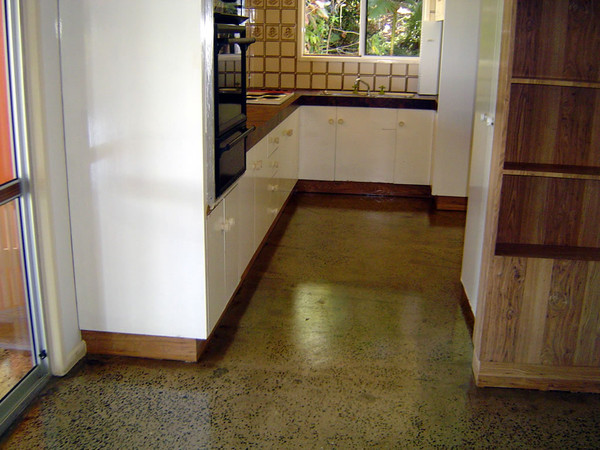Landscape Architecture for Landscape Architects › Forums › SUSTAINABILITY & DESIGN › Sustainable Stone?
- This topic has 1 reply, 7 voices, and was last updated 15 years, 7 months ago by
 Keven Graham.
Keven Graham.
-
AuthorPosts
-
May 19, 2010 at 9:01 pm #169616
 Adam TrujilloParticipant
Adam TrujilloParticipantI’ve been doing a series of presentations at my office on “sustainability” I’m on the subject of materials right now and I am really struggling with the topics when it comes to paving surfaces. Is their a sustainable alternative to natural stone or dimension stone? I am aware of the porous pavement products and adding flyash to concrete. However, finding an alternative that is sustainable but also provides the aesthetic of stone seems to be quite challenging. I just seem to be struggling with the idea of having to quarry for the stone that we use on most of our projects, even it it is local… Are there any products and projects that you know of that are successful?
May 19, 2010 at 9:29 pm #169627 Keven GrahamParticipant
Keven GrahamParticipantGood question and debate – How about recycled product. Recovering and recycling stone products can extend the life cycle. Of course it has to be the right application.
May 19, 2010 at 9:58 pm #169626 Lori MolitorParticipant
Lori MolitorParticipantSure, transportation costs of stone = energy lost, but what are the other sustainability arguments against using stone?
It doesn’t really require chemicals to install or maintain. It has good insulating properties. Depending on installation methods, it can make allowances for water infiltration. It doesn’t require much maintenance and has an indefinite life span. It can be recycled or re-used. Other pros or cons?
Sorry, I don’t mean to by hijacking your thread, I just don’t quite understand your issue.
May 19, 2010 at 10:36 pm #169625 Adam TrujilloParticipant
Adam TrujilloParticipantI’m just struggling finding a sustainable product that has the aesthetic qualities of stone. The issue is that the process of quarring stone is very environmentally devastating and energy intensive. So what material do we specify as designers that don’t have such a dramatic impact on the environment. I’m looking for alternatives that are truely sustainable. Not just “less bad”. It’s great to have a product that is shipped from less that 500 miles away however, if it still means you’re doing what the picture shows, is it really sustainable?
 May 19, 2010 at 10:55 pm #169624
May 19, 2010 at 10:55 pm #169624 Bob LutherParticipant
Bob LutherParticipantConcrete countertops with “seeded” agregate polished to represent granite
broken concrete stepping stones or retaining walls
stamped and stained concrete rather than stone
local agregate (lava rock, pumice, granite, etc.) in road surfaces (concrete or ashpault)
Recycled rubber tires in road surfaces
reused recycled stone.
Native stone
HiMacs surfaces for counters and furnature creationConcrete is a repeated theme because cement, sand, and aggregates can be all locally “harvested”. Concrete is a flexible medium that is underused for aesthetics, most people just think of gray concrete,here are a couple of examples i found on google in a minute of searching…


 May 19, 2010 at 11:06 pm #169623
May 19, 2010 at 11:06 pm #169623 Lori MolitorParticipant
Lori MolitorParticipantAhh, it seems the ‘finding a balance’ arguement works here. Until we stop buiding roads, highways, bridges, houses, shopping malls, schools, churches and other buildings and structures, places like this will exisit. I’d venture to say that hardscape applications of quarried materils is a very low, single diget percentage of all quarried materials. Crushed stone for concrete is probably #1 on the list (in addition to creating air pollution for it’s production and recycling).
I would also expect that regulations exist in most jurisdictions which enforce BMPs, require permits and land use buffering, and reclamation projects. I don’t pretend to think the earth wouldn’t be better off without mineral extraction, but until we all learn to live in thatched huts and walk everywhere we go, I don’t see using alternate materials as much of a problem compared to the road construction projects that your new development or building site will require or induce.
For educational purposes, I did a google search and found one explaination of the process that one company uses: http://www.vulcanmaterials.com/social.asp?content=story.
May 20, 2010 at 2:13 am #169622 Roland BeinertParticipant
Roland BeinertParticipantI agree with Bob. Recycled concrete is probably the best option. It’s called urbanite. Here’s a link that to an article on it: http://blog.sustainablog.org/the-recycled-post-industrial-green-building-material-urbanite/
Stone found on site is even better, but there’s no guarantee it will be flat enough to work as paving stone.May 20, 2010 at 5:28 am #169621 Jason T. RadiceParticipant
Jason T. RadiceParticipantI think that, depending on where you are, natural stone IS the sustainable choice. If quarried locally, there is minimal transportation costs, especially when you consider that any concrete product is an amalgamation of many materials, each needing transport and refining. The process to create concrete is also very carbon intensive, as the cement portion is baked at high tempertatures. All of the aggregates must also be separately mined and crushed, using even more resources. No matter what you use, you are quarrying or using petroleum based products. Most paving materials also require massive amounts of heat in their generation (concrete, bricks, asphalt). Might as well try to minimalize it.
Native stone is minimally disturbing, as the face is cut, the stone is dimensionally cut, and to the site it goes. It also lasts almost forever, and can be reused and infinite amount of times. Concrete has to go through other processes, such as crushing, to be used again as aggregate. Dimensional stone quarries are also less destructive than aggregate quarries, as the stone is protected, and usually has a small footprint when compared to other quarries.
Over the course of millions of years, nature recycles stone by itself. It also creates new stone. In fact, a whole mess of new stone is being created in Iceland right now. If you use a local quarry, its the best choice you can make, and the choice for thousands of years. (look at the Appian way)
If you are on the east coast, you can also try asphalt pavers from a company like Hanover. They contain up to 94% recycled content, and last for a very long time.
May 20, 2010 at 1:48 pm #169620Brian Hochstein
ParticipantAnd on the lighter side of this discussion, The Onion weighs in…http://www.theonion.com/articles/geologists-we-may-be-slowly-running-out-of-rocks,17341/
In all seriousness, working with a local stone supplier that you trust is what has worked for me when using natural stone. I love the concrete comments though. There are so many things that can be done with concrete.
May 20, 2010 at 3:15 pm #169619 Adam TrujilloParticipant
Adam TrujilloParticipantYeah, I’m going to definately look into local quarries that our office can specify stone from.
However, I did look up Vulcan and they do a lot of aggregate extraction here around LA and it’s pretty bad. There is a whole website and community uproar about their company.So I guess this really comes down to what Jason and Brian talked about. As designers and specifiers we really need to trust and understand where our stone comes from. Because through the small research that I did it seems like a group of mining companies out here are opperating without the proper permits…. : /
May 20, 2010 at 4:47 pm #169618 Bob LutherParticipant
Bob LutherParticipantthe problem is people do not use LOCAL stone, they want greek marble, french limestone, lunar moon fragments, or rose quartz, or xyz exotic granite… concrete can provide those “exotic” looks with materials that are already available. The question was to find other alternatives to quarried stone, I agree that if you can find a responsible quarry with desirable products than that would be ideal but if you cannot there are other options that have practicality – they may not have the “green stamp” of enviro-approval due to the process to create the materials but they are options. The ideal stone would be stones actually found on-site. I once had a project where the shaping of the site extracted a few tons of native granite boulders ( few hundred boulders of various sizes), we tried to convince the client to use these stones but they didn’t like that look, too common, we even stained a few of the boulders to change the “common look” of the boulders. In the end they had boulders trucked in from a local stone yard who got the boulders from some quarry which ended up looking like the stained boulders we had offered in the begining. All you can do is try your best to do the things that you feel are best.
May 20, 2010 at 6:09 pm #169617 Roland BeinertParticipant
Roland BeinertParticipantJason,
Everything you said about concrete vs. local stone is true. I prefer local stone. But urbanite, which is blocks of broken concrete from old roads or buildings, is still a good alternative if there is no local stone available. It ends up in the landfill if it isn’t reused.
http://www.terranovalandscaping.com/blog/2007/02/07/90/ -
AuthorPosts
- You must be logged in to reply to this topic.


